Left Hip Sharp Pain: Causes, Symptoms, and Effective Treatments
What causes sharp, stabbing pain in the left hip. How is femoroacetabular impingement (FAI) diagnosed. What are the most effective treatments for hip pain. Can physical therapy help reduce the need for hip surgery. How to manage hip pain at home.
Understanding the Anatomy of the Hip Joint
The hip joint is a complex structure that plays a crucial role in our daily movements. It’s a ball-and-socket joint where the head of the femur (thighbone) fits into the acetabulum (hip socket) of the pelvis. This design allows for a wide range of motion, enabling us to walk, run, and perform various activities.
Key components of the hip joint include:
- Articular cartilage: Covers the surfaces of the femoral head and acetabulum, allowing smooth movement
- Labrum: A ring of cartilage that surrounds the acetabulum, deepening the socket and providing stability
- Ligaments: Connect the femur to the pelvis, providing additional stability
- Muscles and tendons: Surround the joint, enabling movement and support
Understanding this anatomy is crucial when discussing hip pain, as various issues can affect different parts of the joint, leading to discomfort and reduced mobility.
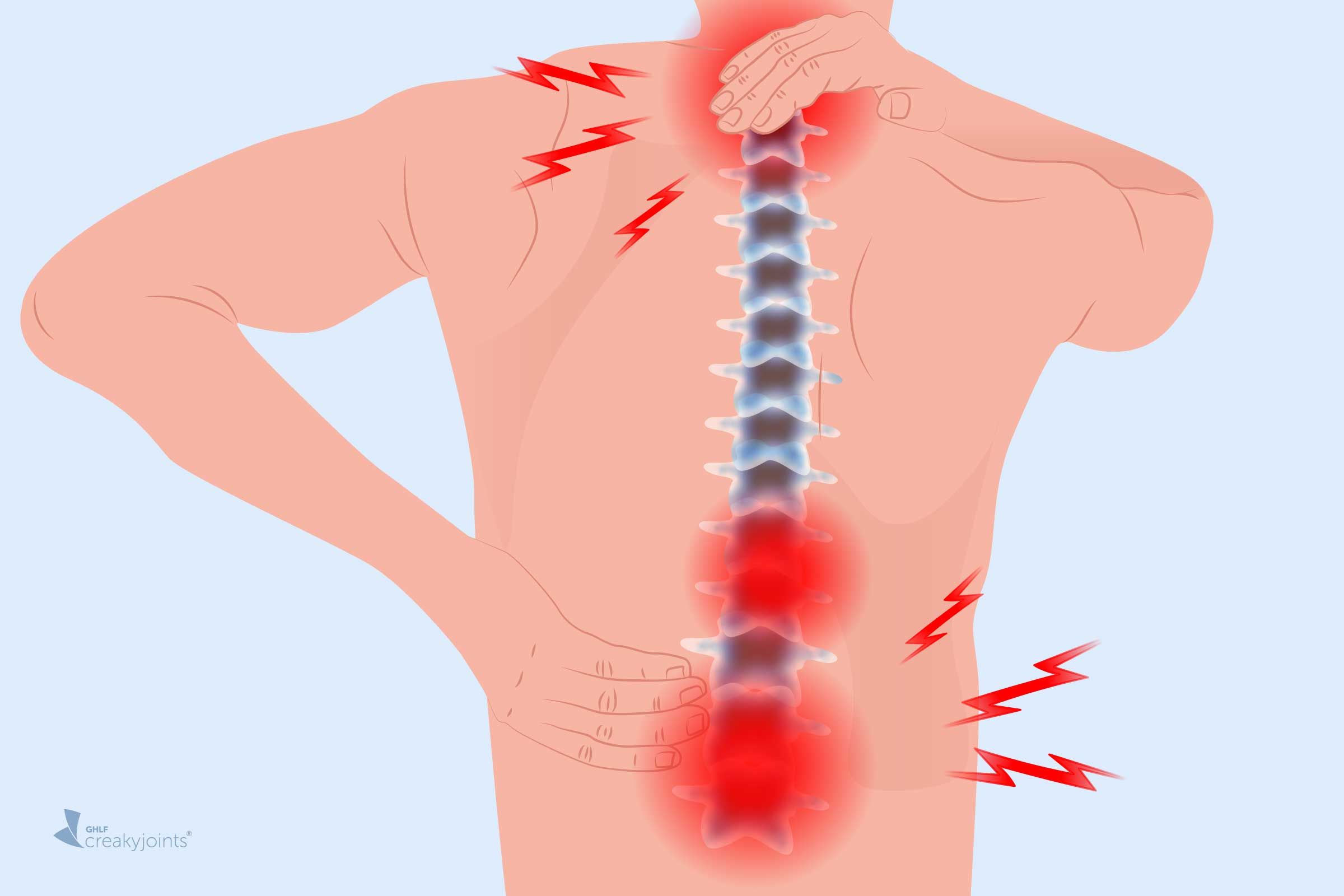
Common Causes of Sharp, Stabbing Pain in the Left Hip
Sharp, stabbing pain in the left hip can be caused by several factors. While general wear and tear can contribute to discomfort, specific conditions often lead to more acute symptoms. Here are some common causes:
Femoroacetabular Impingement (FAI)
FAI is a leading cause of sharp hip pain. It occurs when there’s abnormal contact between the femoral head and the acetabulum. This can lead to damage of the labrum and articular cartilage, resulting in pain and reduced mobility.
Labral Tears
The labrum can tear due to injury, repetitive motions, or structural abnormalities. Labral tears often cause a sharp, catching sensation in the hip, particularly during certain movements.
Osteoarthritis
While osteoarthritis typically causes a dull ache, it can sometimes manifest as sharp pain, especially in advanced stages or during certain movements.
Bursitis
Inflammation of the bursa (small fluid-filled sacs that reduce friction between tissues) can cause sharp pain, particularly on the outer part of the hip.

Tendinitis
Inflammation of the tendons around the hip joint can lead to sharp pain, especially during movement or when pressure is applied to the affected area.
Recognizing Symptoms of Femoroacetabular Impingement (FAI)
FAI is a common cause of sharp, stabbing hip pain. Recognizing its symptoms can help in early diagnosis and treatment. Common signs of FAI include:
- Sharp pain in the groin area or outer hip
- Discomfort when sitting, especially in low seats
- Catching, popping, or clicking sensations in the hip
- Pain that worsens with physical activity
- Stiffness in the hip joint
- Decreased range of motion
How is FAI diagnosed? Diagnosis typically involves a combination of physical examination, medical history review, and imaging tests. X-rays can show bone abnormalities, while MRI scans can reveal soft tissue damage, such as labral tears.
The Role of Physical Therapy in Treating Hip Pain
Physical therapy plays a crucial role in managing hip pain, particularly for conditions like FAI. It offers several benefits:
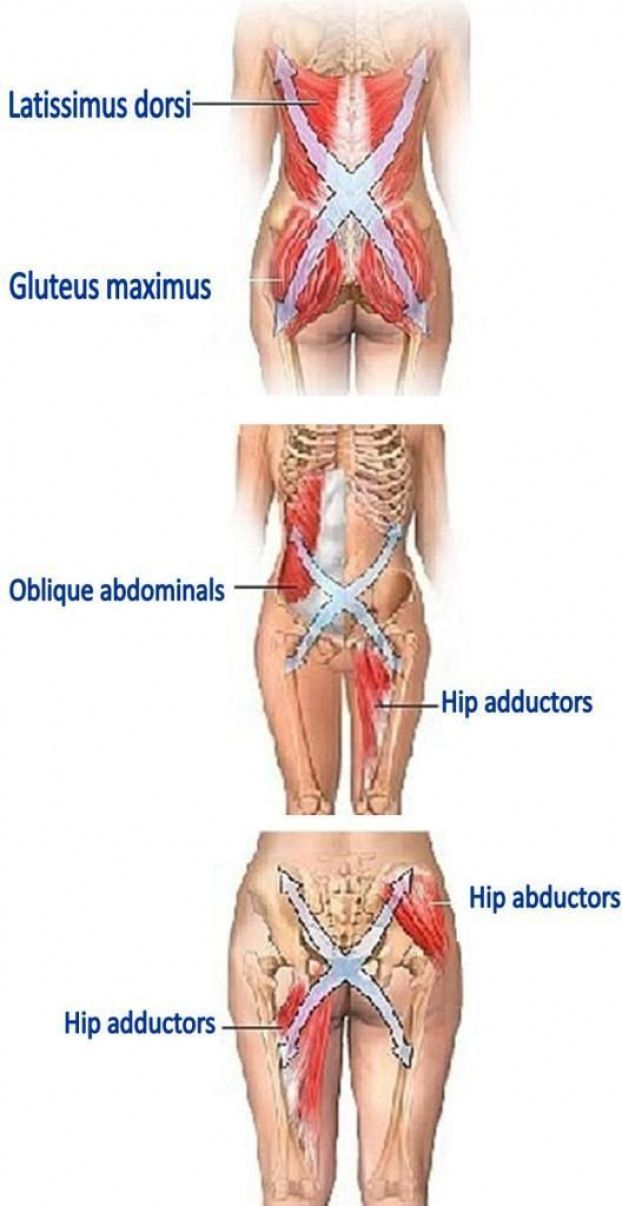
Pain Reduction
Through targeted exercises and manual therapy techniques, physical therapists can help reduce pain and improve function. The International Hip Outcome Tool (iHOT) is often used to measure progress, with studies showing an average improvement of 16 points over 12 weeks of therapy.
Improved Mobility
Specific exercises can help increase hip joint mobility and strengthen supporting muscles, leading to better overall function.
Surgery Prevention
Can physical therapy help avoid surgery? In many cases, yes. Research indicates that proper physical therapy can significantly reduce the need for surgical intervention. One study found that only 4 out of 37 participants who underwent physical therapy for FAI ultimately elected to have surgery.
Personalized Treatment Plans
Physical therapists create customized treatment plans based on individual needs, ensuring targeted and effective care.
Surgical Options for Persistent Hip Pain
While physical therapy is often effective, some cases of hip pain may require surgical intervention. Common surgical procedures include:

Arthroscopy
This minimally invasive procedure allows surgeons to repair labral tears and address bone abnormalities causing FAI.
Hip Resurfacing
This procedure involves trimming and capping the femoral head with a metal covering, preserving more bone than a total hip replacement.
Total Hip Replacement
In severe cases, particularly with advanced osteoarthritis, a total hip replacement may be necessary to restore function and alleviate pain.
How long is the recovery period after hip surgery? Recovery times vary depending on the procedure and individual factors, but generally range from 6 weeks to 6 months for full recovery.
Home Remedies and Lifestyle Changes for Hip Pain Management
While professional medical care is often necessary for hip pain, there are several steps you can take at home to manage discomfort and support overall hip health:
Rest and Activity Modification
Avoiding activities that exacerbate pain can help reduce inflammation and promote healing. However, complete inactivity is not recommended, as it can lead to stiffness and weakness.

Ice and Heat Therapy
Applying ice to the affected area can help reduce inflammation and numb pain, especially in acute cases. Heat therapy can be beneficial for chronic pain, helping to relax muscles and improve circulation.
Stretching and Low-Impact Exercise
Gentle stretching and low-impact exercises like swimming or cycling can help maintain flexibility and strength without putting excessive stress on the hip joint.
Weight Management
Maintaining a healthy weight can significantly reduce stress on the hip joint, potentially alleviating pain and slowing the progression of conditions like osteoarthritis.
Proper Footwear
Wearing supportive shoes with good cushioning can help reduce impact on the hips during daily activities.
How often should you perform hip stretches? For general maintenance, aim to stretch daily. However, consult with a physical therapist or healthcare provider for a personalized stretching routine, especially if you’re experiencing pain.
When to Seek Professional Help for Hip Pain
While some hip pain can be managed at home, certain symptoms warrant immediate medical attention. Seek professional help if you experience:

- Severe pain that interferes with daily activities
- Pain that persists for more than a few weeks
- Swelling or deformity in the hip area
- Inability to bear weight on the affected leg
- Signs of infection, such as fever or redness around the hip
- Pain that radiates down the leg or to the groin area
Early intervention can prevent further damage and lead to more effective treatment outcomes. Don’t hesitate to consult a healthcare provider if you’re concerned about your hip pain.
Innovative Treatments and Future Directions in Hip Pain Management
As medical science advances, new treatments for hip pain are emerging. Some innovative approaches include:
Regenerative Medicine
Techniques like platelet-rich plasma (PRP) injections and stem cell therapy show promise in promoting tissue healing and reducing inflammation.
Advanced Imaging Techniques
3D imaging and computer modeling are improving diagnosis and surgical planning for complex hip conditions.
Robotic-Assisted Surgery
This technology enhances precision in procedures like hip replacements, potentially leading to better outcomes and faster recovery times.

Wearable Technology
Smart devices that monitor movement patterns and provide real-time feedback are being developed to aid in rehabilitation and prevent further injury.
What is the future of hip pain treatment? While current treatments are effective for many patients, ongoing research aims to develop even more targeted and less invasive options. Personalized medicine, based on individual genetic and lifestyle factors, may play a significant role in future hip pain management strategies.
As we continue to unravel the complexities of hip pain and its various causes, treatment options will likely become more refined and effective. Staying informed about these advancements and working closely with healthcare providers can help ensure the best possible outcomes for those dealing with hip pain.
Sharp, Stabbing Pain in Hip
Coronavirus and Our Commitment to Patient Safety
The hip’s joints help swing your leg while you’re walking the dog. They also allow you to swing your leg out when getting out of the car and make many other common movements possible. However, even these normal daily activities can be a trial if your hip is painful.
Unfortunately, people are all too likely to develop hip pain. Medical researchers report that up to 40% of athletes develop chronic hip pain, and up to 15% of adults over 60 also experience pain in this joint. There is one issue that commonly causes constant sharp, stabbing pain in the hip. Luckily, there are also several treatment options that can help you deal with this issue.
This issue is likely causing the sharp, stabbing pain in your hip
A few issues can cause pain and dysfunction in your hip joints. Hip osteoarthritis and referred pain from the lower back can easily cause hips to be painful. However, people who are feeling sharp, stabbing pains in their hip are likely dealing with an issue called femoroacetabular impingement (FAI).
FAI occurs when the rim of cartilage around the socket of the hip joint, or labrum, is damaged or torn. Typically, this condition leads to symptoms such as:
- Sharp, stabbing pain in the groin area or outer hip
- Discomfort when sitting, particularly in low seats
- Catching, popping, snapping or clicking sensations in the hip
What can you do to reduce the sharp, stabbing pain in your hip?
Surgery is one of the most commonly used treatment options for FAI and the sharp, stabbing hip pain it causes. However, physical therapy is a less invasive option that can offer you several benefits.
Some of the benefits FAI patients could get from physical therapy include:
- Improvements in hip pain and function — The International Hip Outcome Tool (iHOT) is designed to measure hip pain and function. One study reports that a physical therapy program improved iHOT scores by 16 points on average over 12 weeks.
- Reduced need for hip surgery — Studies show that physical therapy for FAI can help patients decrease their need for surgery.
 Researchers from one study report that only 4 of the 37 participants who had physical therapy elected to have surgery.
Researchers from one study report that only 4 of the 37 participants who had physical therapy elected to have surgery.
Armor Physical Therapy is ready to help treat your hip pain
Do you have sharp, stabbing pain in your hip? Our therapy specialists at Armor Physical Therapy are here to help you. We offer free screenings that can reveal the source of your hip pain. Our team also excels at building personalized therapy plans intended to reduce hip pain. You can even get therapy from home thanks to our virtual care and at-home therapy services, and none of our services require that you have a doctor’s referral.
Contact us today for more information about how we can help with your hip pain or to schedule an initial appointment.
Quick Links
Our Locations
FAQ
Conditions Library
Schedule An Appointment
Get our Email Newsletter
Notice: JavaScript is required for this content.
No Fields Found.
Follow
Armor PT
- Follow
- Follow
- Follow
Causes, Treatments, and When to Seek Help
Hip pain is the general term for pain in or around the hip joint. It isn’t always felt in the hip itself but may instead be felt in the groin or thigh.
It isn’t always felt in the hip itself but may instead be felt in the groin or thigh.
Read on to learn about the causes of hip pain and how it’s diagnosed and treated.
Certain injuries or conditions can cause hip pain.
Inflamed tendons
The most common cause of acute hip pain is inflamed tendons, or tendonitis. This is often due to too much exercise. This condition can be very painful, but it usually heals within a few days.
Arthritis
The most common cause of long-term hip pain is arthritis. Arthritis can cause pain, stiff and tender joints, and difficulty walking. There are various types of arthritis:
- Osteoarthritis (OA) can be the result of age-related wearing down of the cartilage that surrounds the joints.
- Trauma to a joint, like a fracture, may cause traumatic arthritis like osteoarthritis.
- Infectious arthritis is due to an infection in the joint causing the destruction of cartilage.
- Rheumatoid arthritis (RA) is due to the body’s immune system launching an attack on the joints.
 This type of arthritis may eventually destroy joint cartilage and bones.
This type of arthritis may eventually destroy joint cartilage and bones.
Osteoarthritis is much more common than rheumatoid arthritis.
Trochanteric bursitis
Another possible cause of hip pain is trochanteric bursitis. This condition occurs when the bursa, which is a liquid-filled sac near the hip joint, becomes inflamed.
A number of factors can cause trochanteric bursitis, including hip injury, overuse of the joints or posture problems.
Other conditions such as RA can also cause hip pain. This condition is much more common in women than in men.
Hip fractures
Hip fractures are common in older adults and in those who have osteoporosis, which is a weakening of the bones due to age or other factors.
Hip fractures cause very sudden, severe hip pain, and they require immediate medical attention. There are complications that can arise from a fractured hip, such as a blood clot in the leg.
A hip fracture usually requires surgery to be corrected. You’ll most likely need to have physical therapy to recover.
You’ll most likely need to have physical therapy to recover.
There are other, less common conditions that can cause hip pain. These include snapping hip syndrome and osteonecrosis, or avascular necrosis.
Snapping hip syndrome
Snapping hip syndrome, which most commonly occurs in dancers or athletes, is characterized by a snapping sound or feeling in the hip.
This snapping may occur when you’re walking or getting up out of a chair, for example. The condition is usually painless, but can cause pain in some cases.
Snapping hip with pain is usually a sign of cartilage tear or fragments of material in the hip.
Osteonecrosis
Osteonecrosis, or avascular necrosis, occurs when blood doesn’t reach the bones, either temporarily or permanently. This can lead to the loss of the supporting bone.
In this condition, the cartilage is normal initially but will eventually collapse as it progresses. Eventually, bones may break or crumple. It’s not always clear what causes osteonecrosis.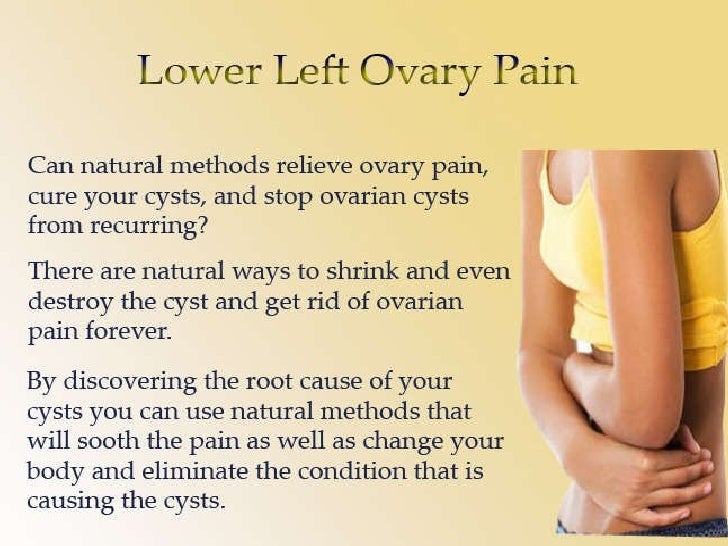
Joint injury, heavy use of steroid medications or alcohol, and cancer treatments may put you at greater risk for this condition. But in many cases, the cause is never determined.
Contact your doctor if you have hip pain that lasts longer than a few days. They can come up with a plan to manage pain and treat your condition.
However, you should contact your doctor immediately if the hip is bleeding or you can see exposed bone or muscle, a popping noise occurs, or you can’t bear weight.
Also, seek immediate help if your hip joint appears deformed or is swollen, or if you have severe pain.
Prompt medical attention is necessary for hip pain accompanied by any of the following:
- swelling
- tenderness
- soreness
- warmth
- redness
These may be signs of serious conditions, including septic arthritis, which is a joint infection. If it’s left untreated, septic arthritis can lead to deformed joints and osteoarthritis.
If you need help finding a primary care doctor, then check out our FindCare tool here.
For pain that could be related to a condition such as arthritis, your doctor will ask you a range of questions, including:
- Is the pain worse at a time of day?
- Does it affect your ability to walk?
- When did your symptoms first appear?
You may need to walk around to let your doctor observe the joint in motion. They’ll measure the motion in the normal and abnormal hip and compare the two.
To diagnose arthritis, your doctor will perform fluid and imaging tests. Fluid tests involve taking samples of blood, urine, and joint fluid for testing in a laboratory. Imaging tests may include:
- X-rays
- CT scans
- MRI scans
- ultrasounds
Imaging tests will provide your doctor with detailed views of your bones, cartilage, and other tissues.
The treatment of hip pain depends on the cause. For exercise-related pain, rest is usually enough to allow the hip to heal. This type of pain is typically gone within a few days.
If you have arthritis, your doctor will prescribe medications to relieve pain and stiffness.
Your doctor may refer you to a specialist who can offer further advice and a physical therapist who can show you how to do exercises to help keep the joint mobile.
For injuries, treatment typically involves bed rest and medications, such as naproxen (Aleve), to relieve swelling and pain.
Hip fractures, malformation of the hip, and some injuries may require surgical intervention to repair or replace the hip. In hip replacement surgery, a surgeon replaces the damaged hip joint with an artificial one.
Although hip replacement surgery will take some physical therapy to get used to the new joint, this is a common surgery that’s most often successful.
Alternative therapies
Some holistic therapies can provide relief from hip pain. Make sure you discuss treatment options with your doctor before undergoing any alternative treatment.
Possible holistic therapies include seeing a chiropractor for an adjustment or having acupuncture.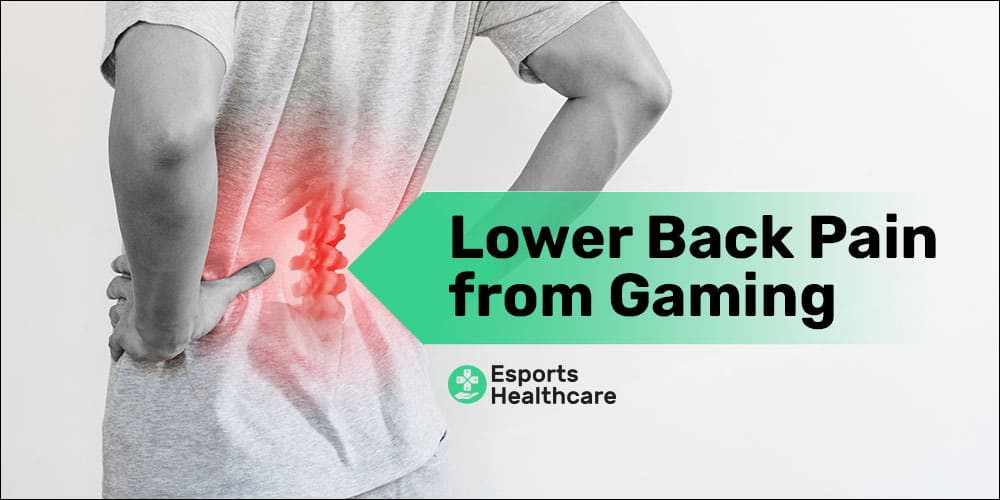 This involves the temporary placement of very small needles into key body areas to promote healing.
This involves the temporary placement of very small needles into key body areas to promote healing.
After you know the cause of your hip pain and treat the pain correctly, you can successfully manage it.
For very minor injuries and exercise-related accidents, no treatment may be necessary and your hip may soon return to normal.
However, for more serious conditions, such as arthritis, fractures, and necrosis, the symptoms are likely to worsen until you receive treatment. Talk to your doctor so they can help you with a treatment plan.
How to relieve pain in the hip joint. Causes and treatment
Hip pain symptoms
Hip pain can radiate to adjacent areas – thighs, groin, buttocks and hip joint.
Sometimes the only symptom of hip problems is knee pain. Such pain is called reflected; it occurs quite often.
Pain in the hip may increase with physical exertion, such as after sports, long walks and runs.
With pain in the hip, it becomes more difficult for a person to move the leg in the hip joint, the range of motion decreases. In severe cases, lameness develops.
How does hip pain affect us?
The hip joints provide mobility to the body, so pain in this area can make daily activities difficult. With hip pain, even getting out of bed, climbing stairs, and walking, not to mention jogging, is a problem. In severe cases, a person cannot move the leg at the joint and transfer body weight to it. In such cases, you should consult a doctor.
Relieve Pain
Blood vessels and nerves are located in the hip area, in particular the sciatic nerve (at the back of the thigh) and the femoral nerve (at the front of the thigh)*
86% of people surveyed said that joint pain associated with Osteoarthritis most affects their lives** 9 0003
Relieve Pain
* Hip Anatomy http://www.arthritis.org/about-arthritis/where-it-hurts/hip-pain/hip-anatomy.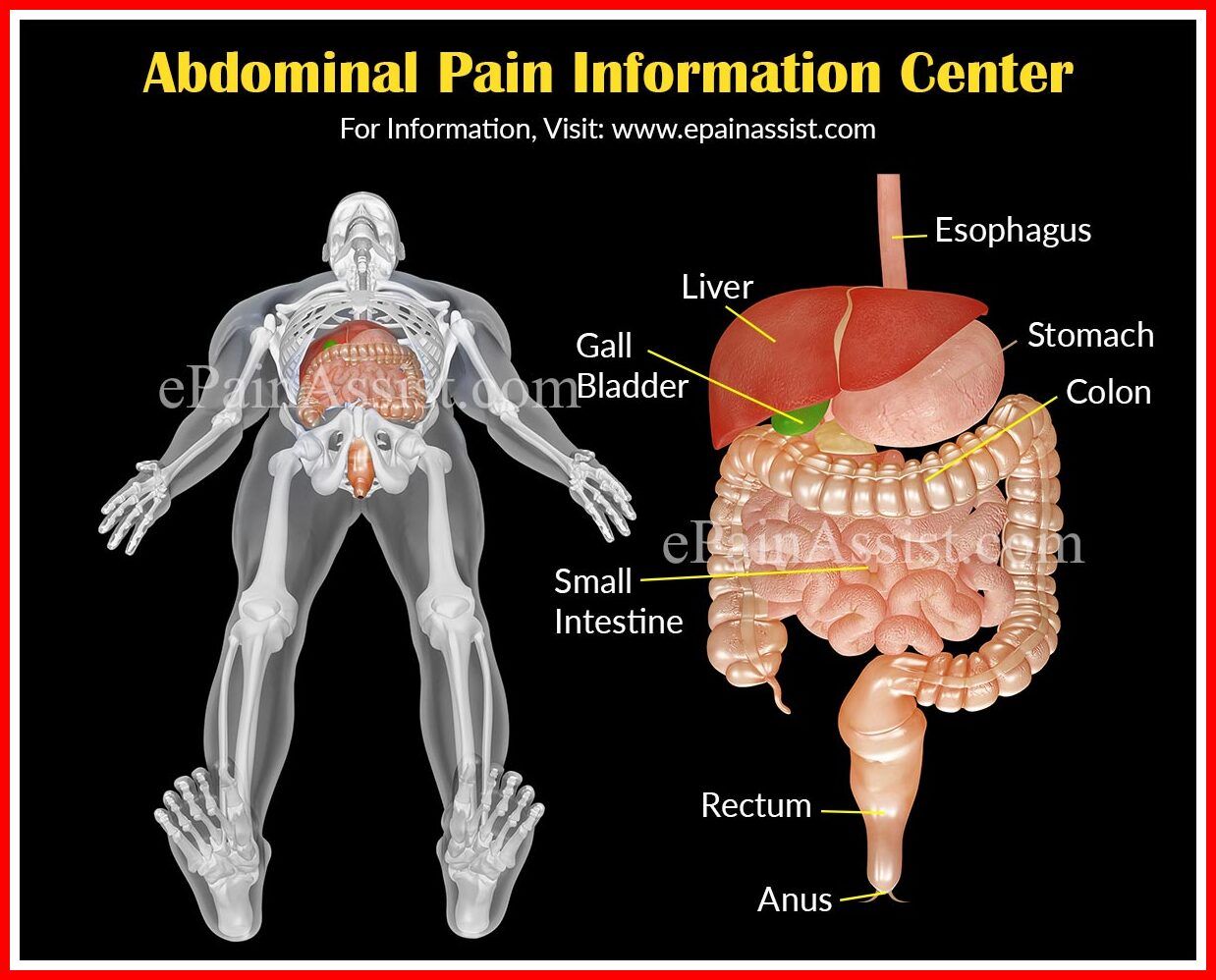 php)
php)
** According to the Global Pain Index 2018 survey, 86% of pain sufferers say that OA-related joint pain affects their lives the most
Why does hip pain occur?
The design of the hip joint allows for smooth movement and the ability to perform repetitive movements, such as when running or jumping. But due to constant stress over the years, the muscles, nerves, ligaments and tendons of the thigh can become inflamed, resulting in pain.
Determine the cause of the pain
Pain can be felt in various parts of the thigh. Localization of pain helps to understand its causes. Pain in the groin and inner thigh area can be a sign of hip problems. Hip pain outside the hip joint, in the upper thigh and buttocks, usually indicates a soft tissue problem.
More serious causes of hip pain
Serious causes of hip pain include osteoarthritis, fractures, dislocations due to trauma, and bursitis (inflammation of the joint capsule). In these cases, you should consult a doctor.
In these cases, you should consult a doctor.
Treatment
If you have hip pain due to muscle or tendon injury or tendon inflammation (tendonitis), over-the-counter medications can help relieve pain and swelling. You can relieve pain and improve joint mobility with the help of therapeutic exercises. But if your hip still hurts badly or doesn’t feel better after seven days of pain medication, you should see your doctor. Be sure to see your doctor if you fall, the pain gets worse, you have a fever, or you feel unwell.
Our preparations
Find out how GSK products can help you
Choose the Voltaren product that is right for your type of pain.
Read more
Learn more
What is pain?
Find out more about pain and its causes.
Read more
How Voltaren 12 hours helps relieve osteoarthritis pain
Osteoarthritis is one of the main causes of joint pain.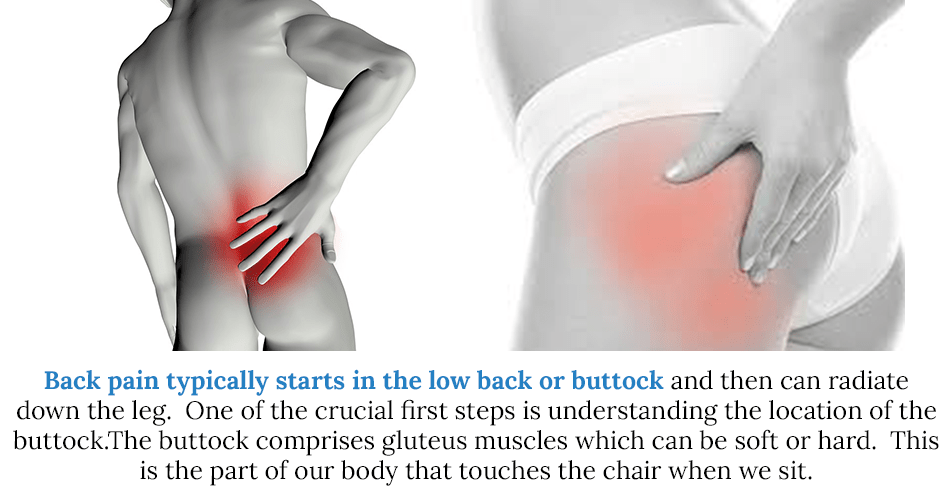 Find out how Voltaren 12 hours helps relieve osteoarthritis pain.
Find out how Voltaren 12 hours helps relieve osteoarthritis pain.
More
Osteoarthritis
Osteoarthritis is the most common joint disease. Find out what causes it and how to relieve the pain.
*According to the Global Pain Index 2018 survey, 86% of pain sufferers said that joint pain associated with Osteoarthritis affects their lives the most
More details
sharp, aching, walking, after running and sitting
The hip joint is one of the largest in the human body. It connects the head of the femur to the acetabulum of the pelvic bone, helps in performing complex leg movements, and provides the function of upright walking. Many people complain that they feel pain in the thigh, which radiates to the joint, groin, buttocks, has an aching or dull character. These symptoms should not be ignored: if your leg hurts in the thigh, the best thing to do is to seek help from a specialist. In this area, important blood vessels and nerve endings are localized, which may be involved in the pathological process.
Pain in the hip joint
- Classification
- Acute pain in the hip joint
- Chronic aching pain in the hip joint
- Local and radiating pain
- Causes of pain in the hip joint
- How to understand what exactly hurts the hip joint
- How to get rid of hip pain
- Which doctor to go to when your hip hurts
- Diagnostics
- Treatment Methods
- Conservative therapy
- Surgery
Classification
Pain in the hip joint can have a different character – acute, local, aching chronic. Often there is a pain syndrome radiating to the groin or buttocks. Causes of pain – injuries and diseases, including coxarthrosis, aseptic necrosis, osteoarthritis, lesions of the ligamentous apparatus, pathologies of the lumbar spine, etc.
Often there is a pain syndrome radiating to the groin or buttocks. Causes of pain – injuries and diseases, including coxarthrosis, aseptic necrosis, osteoarthritis, lesions of the ligamentous apparatus, pathologies of the lumbar spine, etc.
Acute pain in the hip joint
Acute pain in the hip joints is predominantly short-term, characteristic of damage or rapidly developing diseases. Often it becomes the reason for seeking medical help. If therapy is not started in a timely manner, the pain spreads further and loses its pronounced localization.
Chronic aching pain in the hip joint
Aching pain may accompany an acute pain syndrome or be an independent phenomenon. Often it is characterized by an increasing amplitude, disappearing for a while. As a rule, such pain increases with physical activity, for example, when playing sports, running, long walking.
Over time, it becomes more difficult to move the limb, the range of motion is limited. In especially advanced cases, lameness may develop. Unfortunately, many people prefer to endure chronic aching pain and try to self-medicate. Remember, the best thing you can do to regain your health and freedom of movement is to make an appointment with a specialist.
In especially advanced cases, lameness may develop. Unfortunately, many people prefer to endure chronic aching pain and try to self-medicate. Remember, the best thing you can do to regain your health and freedom of movement is to make an appointment with a specialist.
Local and radiating pain
If a person has pain in the hip joint, it is often accompanied by irradiation, including to the knee joint, inguinal region. A similar pain syndrome can noticeably increase if you lean on an injured limb. Often radiating pain develops with osteoarthritis.
To make an appointment, leave your phone number
Causes of pain in the hip joint
Pain in the hip joint can be triggered by various factors and pathologies. We list the main ones:
- Bursitis (inflammation of the articular bag). May be chronic or acute. It is characterized by severe pain in the affected joint, which does not recede even in the supine position.

- Coxarthrosis. It is provoked by a violation of metabolic processes in cartilage, which provokes their death. With this pathology, the pain syndrome is felt not only in the region of the femoral joint, but also in the lower back.
- Arthritis. This is an inflammatory process that occurs due to a malfunction in the process of the immune system. It is characterized by swelling of the affected area, fever, a problem with motor function.
- Tendinitis is a disease of the tendons that causes pain on movement, as well as articular “clicking”, a change in gait.
- Osteochondropathy, including Legg-Calve-Perthes disease, characteristic of young patients. The pain syndrome increases gradually and provokes lameness.
Important!
The diseases listed above are far from the only causes of pain in the hip joint. Pain syndrome can provoke injuries, benign or malignant neoplasms. Infections should not be ruled out – aseptic necrosis of the femoral head, purulent or tuberculous arthritis.
How to understand that it is the hip joint that hurts
How to understand that the hip joints hurt? Most often, the pain syndrome localized in the thigh does not go away after a few days, you feel constant discomfort and even wake up from it at night. Many patients complain that they are forced to constantly change their position if they are lying or sitting.
Other signs that indicate the possibility of this problem:
- Pain in the groin. It has a pulsating character.
- Dull or throbbing pain in the lower back.
- Pain in the thigh, which radiates to the groin, knee. Often accompanied by weakness or itching in the affected limb.
- Limited mobility of the upper limb. As a rule, it indicates that rheumatoid arthritis is developing.
- Lameness caused by pain. If you have developed such a condition, immediately seek medical help, because trying to reduce pain, you instinctively hold the diseased joint above the other, resulting in a habit that negatively affects the entire musculoskeletal system.

Important!
An important symptom that may indicate the pathology of the hip joint is a characteristic crunch that occurs during movement. If it is accompanied by an increasing pain syndrome, this indicates the presence of pathological changes.
To make an appointment, leave your phone number
How to get rid of pain in the hip joint
No matter what the cause of pain in the hip joint, self-medicate and hope that the problem will disappear on its own. It is necessary to seek help from a qualified traumatologist who will determine the cause of the pain and prescribe conservative or surgical treatment.
Which doctor to go to when the hip hurts
An orthopedic traumatologist specializes in the treatment of pathologies associated with the hip. The Garvis Clinic employs experienced professionals who have extensive positive experience in treating patients suffering from hip pain of various etiologies. They offer only modern diagnostic and treatment methods that will restore your freedom of movement quickly and with minimal trauma.
They offer only modern diagnostic and treatment methods that will restore your freedom of movement quickly and with minimal trauma.
Diagnostics
What should be done if the hip joint hurts? First of all, undergo a thorough diagnosis and determine the cause of the disease. Most often, the specialist prescribes the following examinations:
- radiography of the hip joint;
- CT/MRI of the joint and femur;
- X-ray of the spine;
- laboratory tests.
Methods of treatment
Methods that help relieve pain can be divided into conservative and surgical. They are united by the fact that they are aimed not only at treating pain, but also at eliminating the main cause of the pathology. Also, therapeutic exercises, manual therapy, physiotherapy, physiotherapy exercises have proven themselves well.
Conservative therapy
Conservative therapy includes pain relief, which is selected for each patient individually. First of all, we are talking about a therapeutic blockade that relieves pain and promotes muscle relaxation, normalization of blood flow.
First of all, we are talking about a therapeutic blockade that relieves pain and promotes muscle relaxation, normalization of blood flow.
Also effective:
- Physiotherapy aimed at restoring muscles, normalizing blood circulation and completely eliminating pain.
- Therapeutic exercise, which strengthens the muscular-ligamentous structures, prevents the occurrence of discomfort in the limb in the future.
- Massage and manual therapy – have a beneficial effect on the general condition of tissues.
To make an appointment, leave your phone number
Surgery
One of the most effective surgical methods that allows you to cope with various pathologies of the hip is arthroscopy of the hip joint. This is a low-traumatic surgical intervention that allows you to accurately determine the main focus of the pathology and get rid of such diseases and injuries:
- synovitis;
- osteoarthritis;
- arthritis;
- neurosis of the femoral head;
- snap joint;
- injuries and complications after previous surgeries.


 Researchers from one study report that only 4 of the 37 participants who had physical therapy elected to have surgery.
Researchers from one study report that only 4 of the 37 participants who had physical therapy elected to have surgery.  This type of arthritis may eventually destroy joint cartilage and bones.
This type of arthritis may eventually destroy joint cartilage and bones.


